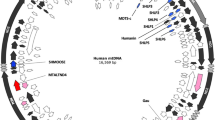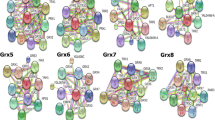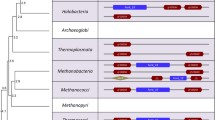Abstract.
The thioredoxin/glutaredoxin family consists of small heat-stable proteins that have a highly conserved CXXC active site and that participate in the regulation of many redox reactions. We have searched the human genome sequence to find putative pseudogenes (non-functional copies of protein-coding genes) for all known members of this family. This survey has resulted in the identification of seven processed pseudogenes for human Trx1 and two more for human Grx1. No evidence for the presence of processed pseudogenes has been found for the remaining members of this family. In addition, we have been unable to detect any non-processed pseudogenes derived from any member of the family in the human genome. The seven thioredoxin pseudogenes can be divided into two groups: Trx1-ψ2, -ψ3, -ψ4, -ψ5 and -ψ6 arose from the functional ancestor, whereas Trx1-ψ1 and -ψ7 originated from Trx1-ψ2 and -ψ6, respectively. In all cases, the pseudogenes originated after the human/rodent radiation as shown by phylogenetic analysis. This is also the case for Grx1-ψ1 and Grx1-ψ2, which are placed between rodent and human sequences in the phylogenetic tree. Our study provides a molecular record of the recent evolution of these two genes in the hominid lineage.
Similar content being viewed by others
Author information
Authors and Affiliations
Additional information
Electronic Publication
Rights and permissions
About this article
Cite this article
Spyrou, G., Wilson, W., Padilla, A.C. et al. A genome-wide survey of human thioredoxin and glutaredoxin family pseudogenes. Hum Genet 109, 429–439 (2001). https://doi.org/10.1007/s004390100597
Received:
Accepted:
Published:
Issue Date:
DOI: https://doi.org/10.1007/s004390100597




